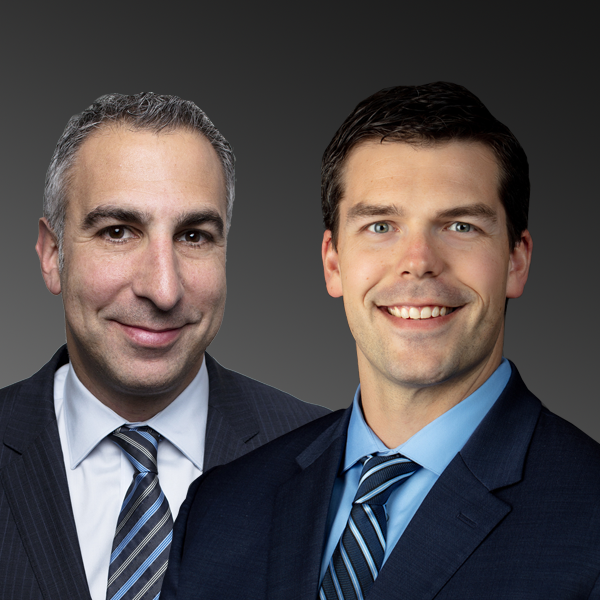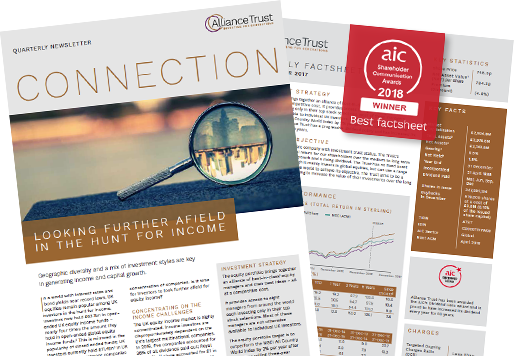The importance of structure in securing steady long-term performance from global equities
The stories of ‘star’ fund managers with runaway performance figures, dominate headlines when it comes to investment. These are the tales of funds that outperform the index by double-digit percentages, and of managers who bet on a narrow group of stocks at the right time and reap the rewards as their fortunes soar.
However, for a retail investor, entrusting your savings to a popular manager, even one that may have been recommended by your adviser or investment platform, can end in disappointment, if their investment style falls out of favour and performance lags. If your money is locked up in illiquid stocks, this can add a further headache, making it difficult to redeem your savings if a number of other investors want to withdraw at the same time.
These risks can be minimised and fears mitigated, by opting for diverse investments held in the most suitable structure.
The Alliance Trust global equity portfolio aims to do just that. Its closed-ended structure means outflows have less of an impact on the portfolio’s holdings than in an open-ended fund. The portfolio is shielded from having to raise cash to meet redemptions.
This means investors can rest safe in the knowledge they will be able to buy and sell the Trust at any stage, without having a negative impact on the portfolio itself.
The managers chosen to pick stocks for the portfolio by Willis Towers Watson, also play a crucial part in mitigating the risks for the Trust’s investors.
Firstly, as they are primarily institutional managers, their business are typically less affected by retail flows, and secondly, the managers invest only in quoted companies that often have deep market liquidity.
The Trust’s multi-manager investment approach is the third key differentiator that offers benefits to investors. It ensures that the equity portfolio is well balanced in terms of its exposures to different managers’ styles, as well as sector and geographical spread.
This commitment to a diverse, style-neutral process, ensures there is no drifting towards unexplored sectors, such as unlisted small-cap firms. It also means the performance of the portfolio should be more measured. It may not shoot the lights out in the short term, but it should do well in the long run, and deliver a smoother trajectory throughout a market cycle.
It also helps to have robust checks and balances when it comes to decision-making. With Willis Towers Watson’s scale and manager research and operational due diligence resources, there is solid oversight of the decisions made on investments, ensuring no manager is able to make drastic changes to the process without being challenged. And there is an additional layer of protection for investors from the Board, which holds Willis Towers Watson to account.
Willis Towers Watson understands the danger of relying on a single star manager. Even if he or she does have real skill, their style of investing can fall easily out of favour for long periods. That’s why it has combined the top stock selections of eight world-class managers, all with complementary approaches to investing, which means that the portfolio is never significantly biased in favour of one style, country or sector. It seeks to generate its outperformance almost entirely from stock selection.
Targeting an outperformance of 2% after fees may seem modest, however, it is far from an easy threshold to meet and is one that very few investment funds manage to achieve over a prolonged period.
According to eVestment’s global database of funds, an actively managed global equity fund that achieved 2% net annual outperformance for five years, would have ranked in the top quarter of funds in terms of performance.1 Over a decade it would also have ranked in the top quarter, with other funds failing to maintain performance over longer periods. This is evidence that a slow and steady approach pays off against more volatile performance, which may soar in one year only to slump the next. Over time, big swings in performance can eat away at long-term returns.
Alliance Trust won’t necessarily achieve its performance target every year either. There will always be periods when active managers face headwinds, as they did over the last 18 months, when the market was in large part driven by a narrow group of large US tech stocks. Equally, there will be periods when active managers enjoy tailwinds, such as when widely dispersed valuations present lots of opportunity. However, over time, we think a 2% outperformance on average over rolling three-year periods, is an ambitious but achievable goal.
When it comes to investing investors’ hard-earned cash, consistency is key. This is particularly true for the risk-averse who are planning ahead for retirement, or perhaps saving for a child’s ‘future fund’. In each of these scenarios, achieving 2% per annum outperformance would reap significant rewards.
Let’s take the example of investing £100 a month when a child is born until their 18th birthday. The difference between an assumed long-term equity return of 7% per annum and a return of 9% per annum through 2% per annum outperformance would be £9,613, enough to help with a deposit for a first home, or support them through university.
For those looking ahead to retirement, when capital preservation is as important as continuity of returns, 2% per annum outperformance makes all the difference. For a 35-year-old with a pension valued at around £50,000, and contributing an additional £200 a month, similar assumptions would lead to the outperformance increasing the pot by £389,150 by age 65.
Even leaving the savings well alone and making no contributions pays off. A pot of £100,000 outperforming the market by 2% per annum under the same assumptions would result in an additional £39,993 over a decade.
Over the years, steady performance which gradually increases the size of an investment portfolio, is far more likely to compound an investor’s wealth than a portfolio which outperforms only in certain markets, or when markets favour their particular style of investing.
Expected performance is not a reliable indicator of future returns.






